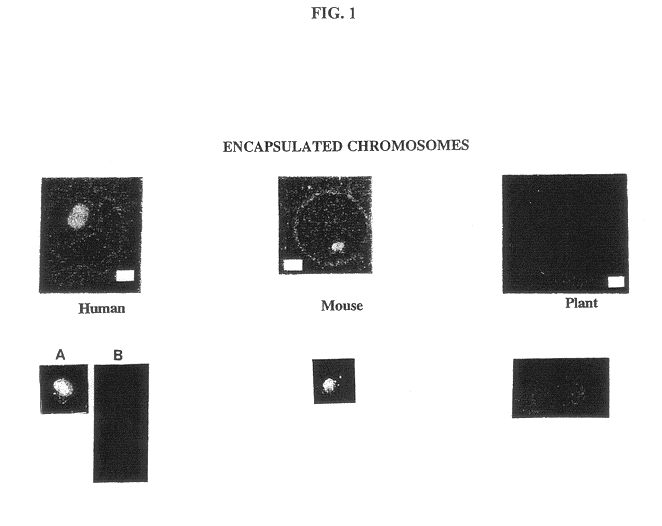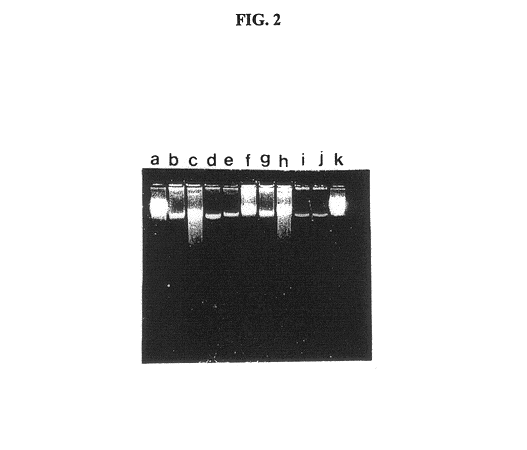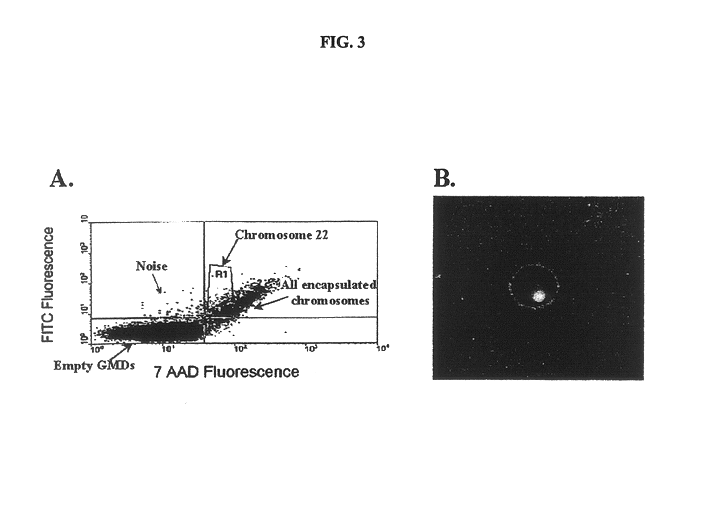Gel microdrops in genetic analysis
a microdrop and genetic analysis technology, applied in the field of nucleic acid analysis methods, can solve the problems of limiting the automation and rapid sample processing of samples, and insufficient banding resolution to detect small deletions or additions of chromosomal elements
- Summary
- Abstract
- Description
- Claims
- Application Information
AI Technical Summary
Benefits of technology
Problems solved by technology
Method used
Image
Examples
example 2
Construction of Chromosome-Specific BAC Libraries
A major unrealized goal of fluorescence in situ hybridization assays has been the use of flow cytometry to isolate specific chromosomes for library construction. Prior to development of the MISH method, after hybridization, only a small fraction of chromosomes remain intact and free in suspension. Without the protection gained using the agarose microspheres, most chromosomes are clumped or fragmented, making them largely unsuitable for flow cytometric analysis (27). We have shown not only that we can hybridize and flow sort encapsulated chromosomes, but also that alkaline-denatured chromosomes can be digested with restriction endonucleases. As a result of this finding, we propose construction of chromosome-specific libraries. Human chromosome 21 was chosen because it is often difficult to identify and sort using conventional dual fluorescent staining since it is small and indistinguishable in the presence of cellular debris (29). The ...
example 3
Use of MISH-sorted Chromosomes for Reverse Chromosome Painting
The development of in situ hybridizations with flow sorted chromosome libraries (25,26), combined with non-isotopic signal detection (30), has become a powerful approach for rapidly analyzing human chromosomal aberrations, such as aneuploidy and translocations. These techniques, termed chromosome painting, are becoming widely used in clinical cytogenetics. However, small rearrangements, additions, or deletions are not detectable using conventional chromosome painting, but these aberrations are detectable by reverse chromosome painting, which is performed using a probe prepared from aberrant chromosomes. A method of using MISH-sorted chromosomes is depicted below.
example 4
Detection of the Philadelphia Chromosome
The Philadelphia chromosome is a shortened chromosome 22 that results from a balanced translocation between chromosomes 9 and 22 with the translocation breakpoints at 9q34 and 22q11. As a result of this translocation, most of the abl oncogene, located on chromosome 9, is juxtaposed to part of the bcr gene, located on chromosome 22, creating a new bcr-abl gene fusion (40, 51, 52, 53, 54). This gene fusion encodes an abnormal protein with strong tyrosine kinase activity compared with the weak tyrosine kinase activity of the normal abl protein. The abnormal tyrosine kinase produced from bcr-abl causes increased cell proliferation and contributes to leukemogenesis by unknown cellular pathways.
Translocations such as bcr / abl are currently detected by cytogenetic examination of metaphase chromosome preparations prepared from bone marrow cultures. Although this method is adequate to detect most chronic myelogenous leukemia cases (CML) in which Ph.sup....
PUM
| Property | Measurement | Unit |
|---|---|---|
| Time | aaaaa | aaaaa |
| Time | aaaaa | aaaaa |
| Fraction | aaaaa | aaaaa |
Abstract
Description
Claims
Application Information
 Login to View More
Login to View More - R&D
- Intellectual Property
- Life Sciences
- Materials
- Tech Scout
- Unparalleled Data Quality
- Higher Quality Content
- 60% Fewer Hallucinations
Browse by: Latest US Patents, China's latest patents, Technical Efficacy Thesaurus, Application Domain, Technology Topic, Popular Technical Reports.
© 2025 PatSnap. All rights reserved.Legal|Privacy policy|Modern Slavery Act Transparency Statement|Sitemap|About US| Contact US: help@patsnap.com



